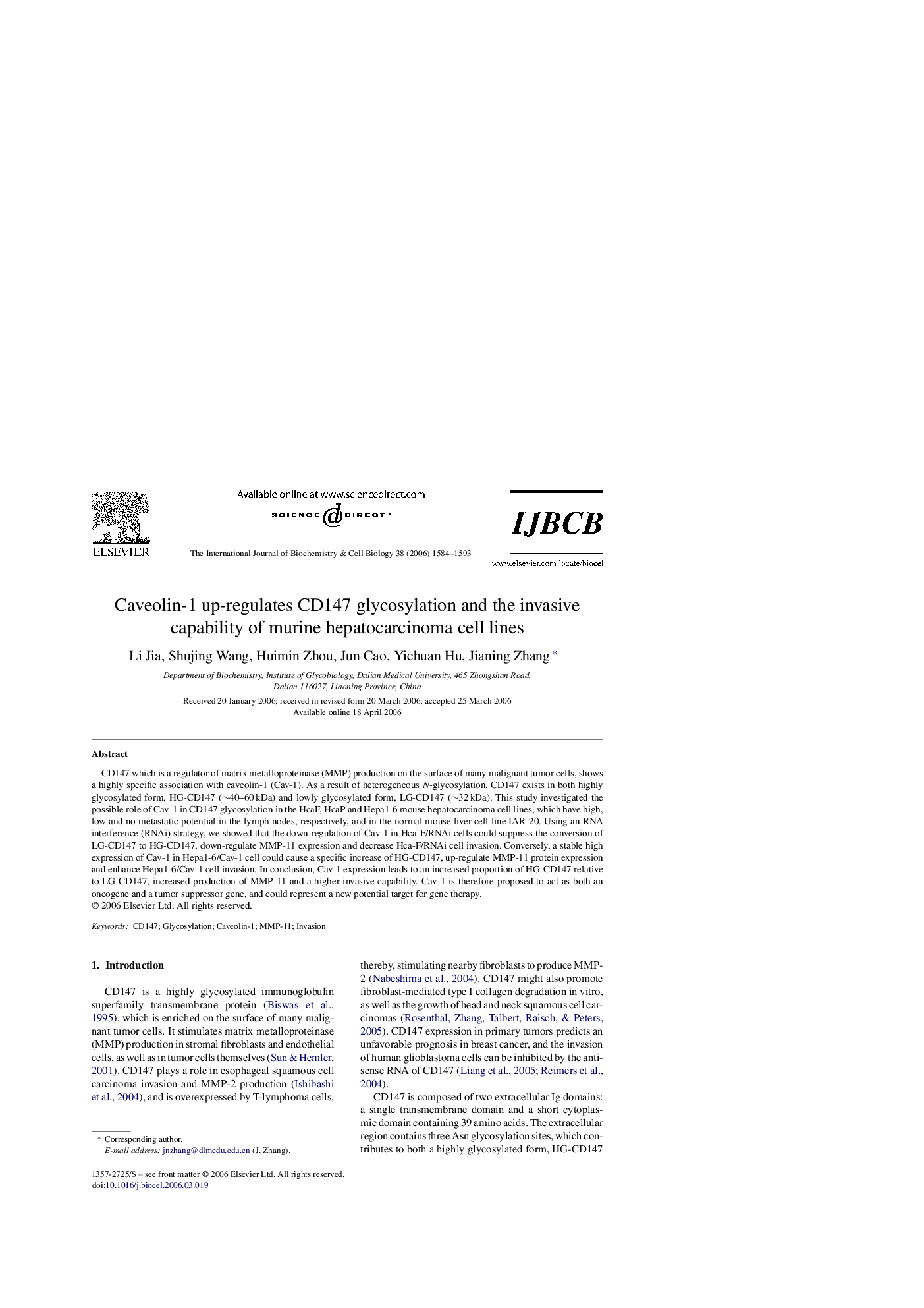| Article ID | Journal | Published Year | Pages | File Type |
|---|---|---|---|---|
| 1985434 | The International Journal of Biochemistry & Cell Biology | 2006 | 10 Pages |
CD147 which is a regulator of matrix metalloproteinase (MMP) production on the surface of many malignant tumor cells, shows a highly specific association with caveolin-1 (Cav-1). As a result of heterogeneous N-glycosylation, CD147 exists in both highly glycosylated form, HG-CD147 (∼40–60 kDa) and lowly glycosylated form, LG-CD147 (∼32 kDa). This study investigated the possible role of Cav-1 in CD147 glycosylation in the HcaF, HcaP and Hepa1-6 mouse hepatocarcinoma cell lines, which have high, low and no metastatic potential in the lymph nodes, respectively, and in the normal mouse liver cell line IAR-20. Using an RNA interference (RNAi) strategy, we showed that the down-regulation of Cav-1 in Hca-F/RNAi cells could suppress the conversion of LG-CD147 to HG-CD147, down-regulate MMP-11 expression and decrease Hca-F/RNAi cell invasion. Conversely, a stable high expression of Cav-1 in Hepa1-6/Cav-1 cell could cause a specific increase of HG-CD147, up-regulate MMP-11 protein expression and enhance Hepa1-6/Cav-1 cell invasion. In conclusion, Cav-1 expression leads to an increased proportion of HG-CD147 relative to LG-CD147, increased production of MMP-11 and a higher invasive capability. Cav-1 is therefore proposed to act as both an oncogene and a tumor suppressor gene, and could represent a new potential target for gene therapy.
